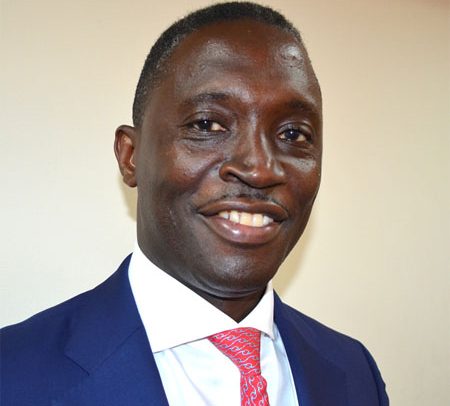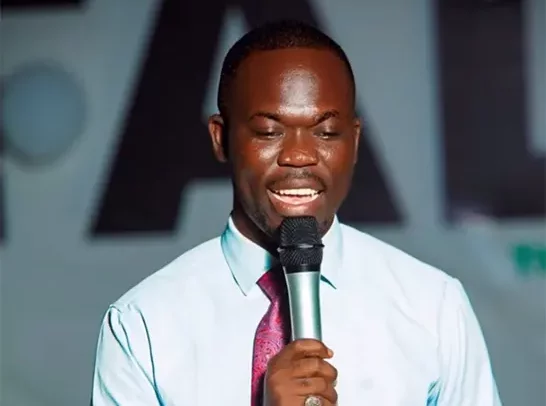

"The doctors didn't expect any of them to make it out of the hospital alive."
At 35 years old, I had a job I loved, a home I loved, and an independent life I loved. But when I took some time away from my job as a police-dispatched crisis intervention counselor, helping people in their most vulnerable times, I felt that something was missing.
I was 35, and while I had dated men here and there, I’d never found the one I wanted to start a family with. I was happy, really, but I couldn’t shake the feeling that I was meant to be a mother.
(Hit the reset button—and burn fat like crazy with The Body Clock Diet!)
I had given up on the idea of having children until my gynecologist reminded me I didn’t need a partner to have a baby. I had always known that was true, but I just never thought I would go that route. I realized that I had the means, I had the job, and I had supportive friends to help. Why not look into it?
With my biological clock ticking in a way that felt almost audible to me, I had to take action sooner than later. I started doing research on artificial insemination (the injection of semen into the vagina) and in-vitro fertilization (the extraction and fertilization of eggs outside of the body). I also joined a Facebook group for single moms who choose to be single moms. The members had answers, doctor recommendations, and, most importantly, words of encouragement.
Becoming A Mother
I started with artificial insemination—the less expensive but also less effective route. After five attempts, and up to $2,000 of out-of-pocket costs per attempt, I was losing hope. One attempt worked, but I had an early miscarriage.
Still, I had hope, and I wasn’t going to walk away quietly from something I wanted so desperately. I decided to try in-vitro fertilization just once. A highly-recommended doctor extracted my eggs and they were fertilized in a petri dish via sperm I got through a sperm bank. He inserted three of the best quality embryos in me, hoping one would take. When he made it clear that he wasn’t optimistic that any of them would take, I made it clear that I wasn’t ready to give up.
I was right. About seven anxiety-ridden days later, lying on an ultrasound table, I found out there were two embryos. And a week after that: three heartbeats. “My dear you have triplets,” said the ultrasound tech. I felt like I was going to fall through the table. The next appointment, I found out one of those embryos had split. I had four babies with beating hearts in my uterus. I was going to have quadruplets.
Credit Link:
Facing The Risks
When the excitement, relief, and joy faded, I was terrified. The list of risks was too long to process. The babies would almost certainly be born with a range of complications. They could die. And so could I.
My parents urged me to reconsider this choice I had made. “This is like you telling me you want to sail the ocean by yourself,” my dad said. Even the doctor had his doubts. He urged me to consider reducing the pregnancy because of the huge risks that come with carrying four babies at age 35. For a split second, I considered it. All I had heard from him was risk after risk after risk.
But his list wasn’t enough to match the joy I felt when I heard those heartbeats, so I decided to let nature decide what was best. That mentality guided every decision from then on, each one more difficult than the last.
The first complication was my irritable bowel syndrome, which was made worse by the nutritionist-recommended diet of 4,700 calories per day. At only eight weeks after conception, I was put on bed rest. I was already contracting, I had intense pelvic pain, and that wasn’t even the worst of it. I had to quit the job I loved and poured myself into for so many years. I couldn’t have that high stress impact my already vulnerable babies.
It didn’t stop there. At 12 weeks they stitched my cervix to keep the babies from coming out before they were ready. And at 16, I was officially an in-patient at the hospital—I’d be there until those babies were born. I felt so out of control of my own body, but it gave me peace of mind just knowing that four hearts were still beating.
While I was on bedrest, I started my Facebook page, Four Peas and a Mom, to document what was happening with me and my babies. My family had asked me to keep it quiet, scared that I’d face judgment for my choice to keep them alive despite so many risks. But I couldn’t do this alone. The page following became the community I needed as things got worse.
Fighting To Survive
Babies can live outside of the womb at 24 weeks, my doctors told me. So it was the scariest day of my life when the doctor came into my room on May 10, 2013, exactly 25 weeks and one day after conception. “Today’s the day,” he said. I had developed HELLP syndrome, an intense version of pre-eclampsia, where my blood pressure was dangerously high. “You’re dying and we need to take the babies.”
I fought with him as he told me I was his patient. “But I’m their mom,” I said, tears streaming down my face. I knew they weren’t ready. I just knew. Still, I was rushed to the delivery room for a C-section. In the room, there were four incubators labeled A, B, C, and D.
Learn more fascinating facts about the female anatomy:
Only one baby made a sound when she came out. They were all rushed into the incubators and into the NICU. I couldn’t hold them. I couldn’t even see them. As they fought their own medical battles, I did, too. Normally, HELLP syndrome goes away after delivery. Mine didn’t. My organs started to shut down, and I started to go into heart and renal failure.
I don’t remember much of the next three days, but I eventually started to recover, so I do remember when a nurse came in and took me to the NICU, where I learned baby D, a little girl I named Delaney, had died. As hard as she tried, she just couldn’t overcome the complications that came with entering the world entirely too early.
After that, I was allowed to see all of my babies: Camden, my only boy, and Sadie and Sydney, my two surviving girls. The doctors didn't expect any of them to make it out of that hospital alive. They wheeled me around to each of my three babies. They were so small, each around one pound at birth. They were practically transparent.
Two weeks after delivery, I could finally go home. My babies were far from ready. I tried to get to the hospital every day, but there were days my own health just didn’t allow it, as I was still recovering from the blood loss during delivery and the high blood pressure caused by HELPP. I felt earth-shattering guilt on each of the days that I had to send a friend to the hospital to bring back detailed reports.
When I did go to the hospital, I could only touch my little ones with a glove on. Their eyes were sealed shut. I was already being pulled in three different directions—not to mention that I was still reeling from the loss of Delaney. One day, at about four weeks, they let me hold one baby, whom I named Sydney, because they thought she would die.
She didn’t. She pulled through despite every statistic stacked against her.
Embracing A New Life
Sydney was in the hospital until just before her first birthday. She’s now 4 years old and hitting developmental milestones, like saying “mama,” but she has a gastronomy tube because she can’t eat well, and she has a tracheostomy tube to help her breath. She'll need assisted care for the rest of her life. But still, she is my fighter.
The other two, Camden and Sadie, came through battles of their own, each hitting healthier turning points around six months, when they were allowed to come home. All three of the children suffer from various health problems, with the girls suffering from gastrointestinal problems and Camden needing glasses already. But we manage. Now that they're all 4 years old, I can just barely keep up with. I couldn’t be more thankful for that.
With Sydney needing around-the-clock care, and Camden and Sadie being, well, 4-year-olds who also need me all the time, I haven’t been able to go back to work. I moved back in with my parents, something I never, ever anticipated. Along with motherhood, my full time job is advocating for my kids to receive the health care they need. Because of their low birth weights, they each qualify for Social Security. I get help from the state for medical services I provide for Sydney, too. It helps, but it could never be enough.
I planned on having one baby and going back to work. I knew single motherhood would be tough, but this reality is something I never could have imagined. They all need me, and they all want my individual attention. I feel that guilt and pull even stronger now than I did when their eyes were sealed shut in those incubators.
On days I think it would be nice to have another parent to help me, I remind myself that I get to raise these thoughtful, kind, persistent, resilient little people the way I want to. And I get to teach them about Delaney. They know her, they feel her, and they talk about her like she’s their fourth quadruplet, because she is. These kids have given meaning to my life. They have taught me how precious every moment is. It’s so crystal clear to me that I was meant to be their mother.
When my quadruplets turned 4, the four of us released balloons into the sky, saying “We love you, Delaney.” She’s watching over her brother and sisters, and she’s watching over me. I don’t always have the means to give Sadie, Camden, and Sydney everything they want, but I promise them that they will always have everything they need.
The love in our little family wakes me up in the morning, and it helps me sleep at the end of every exhausting day. Because of that unconditional love, I know we’re gonna make it.
"The doctors didn't expect any of them to make it out of the hospital alive." Read Full Story











Facebook
Twitter
Pinterest
Instagram
Google+
YouTube
LinkedIn
RSS